Preserving and protecting the environment and promoting resource efficiency.
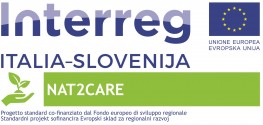
Protecting and promoting natural and cultural resources
The project’s overall objective was to improve the status and the presence of the biodiversity within the project partners’ Natura 2000 areas (the Julian Prealps Nature Park, the Triglavski Narodni Park, and the Natural Park of the Friulian Dolomites) by implementing Natura 2000 habitat and species measures, by improving their integrated and cross-border management, by raising awareness and providing training on the environment, and by increasing the promotion of ecosystem services.
The project aimed to avoid the risk of fragmentation, reduction and loss of biodiversity within the confines of the three project partner parks: the Julian Prealps Nature Park, the Natural Park of the Friulian Dolomites, and the Triglavski Narodni Park. The specific objective of the project was to improve the state and existence of biodiversity in the Natura 2000 areas of the project partners. This aim was achieved by implementing N2K habitat and species measures, by improving their integrated and cross-border management, by raising awareness and providing training on environmental issues, and by increasing the promotion of ecosystem services. These efforts produced a better conservation status of the N2K habitats and species. The main outputs are specifically related to these 3 activities, and consist of about 10 000 ha. of habitat with a better conservation status, 7 pilot actions in support of biodiversity, 2 tools/services developed for the promotion of ecosystem services, and awareness-raising events providing environmental education, which actively engaged about 4000 citizens. These activities benefited organisations for the management of protected areas, landowners and land users, economic operators, citizens/end consumers and decision makers. An innovative approach was envisaged in respect to the methods for monitoring, identifying, and promoting ecosystem services, and for carrying out the awareness-raising, environmental education, and active citizenship engagement activities. A cross-border approach was also necessary due to the fact that all the wildlife species monitored can easily move across the border, as the habitats of the zones have very similar characteristics. The project was innovative in terms of cross-border monitoring methods, which ensured a uniform approach and consistent management interventions in both States, using common protocols.
The activities of the NAT2CARE project have led to better management of the ecosystems and the restoration of biodiversity in the areas of the project partners (the Julian Prealps Nature Park, the Triglavski Narodni Park, and the Natural Park of the Friulian Dolomites), which in turn have improved the conservation status of the N2K species and habitats through cross-border pilot measures in support of biodiversity. The proposed habitat management measures have increased our knowledge and improved the ecological conditions of the plant and animal species concerned. The monitoring of the plant and animal species by means of cross-border protocols helped to achieve the project’s objectives through the use of harmonised approaches consistent with the Habitats and Birds Directive, and it encouraged coordination in cross-border functional areas. In order to assess and promote the ecosystem services, and thus contribute to their improvement and valorisation, the measures were aimed at identifying cross-border ecosystem services (those of the N2K network in particular), and enhancing them by developing specific measurement tools (WebGIS platform, PES methodology). The project’s actions therefore helped to strengthen the ecosystems’ management and promote the restoration of biodiversity through ecosystem services, while at the same time improving the overall conservation status of the Natura 2000 habitats and species within the areas concerned, thus linking the activities to the programme’s specific result indicators.
Lead Partner
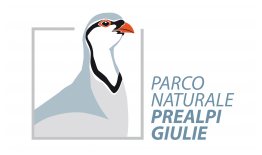
Project partner 1
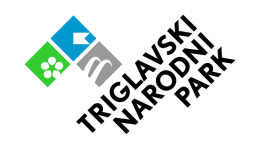
Project partner 2
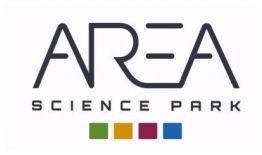
Project partner 3
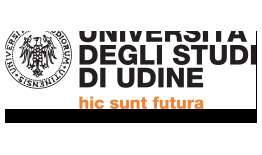
Project partner 4
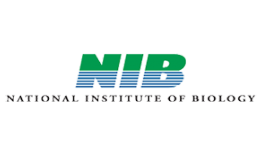
Project partner 5
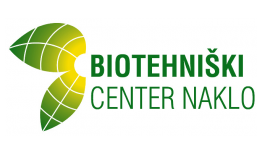
| Poster evento annuale 30.05.2018 NAT2CARE_ITA.pdf ( 565 bytes, published on 11 June, 2018 - 17:50 ) | |
| Poster presented at the mammologist italian association ATIT_eng_ita_slo.pdf ( 2 bytes, published on 31 October, 2019 - 11:04 ) | |
| Pheromones as a monitoring tool SES_ita_eng_slo.pdf ( 4 bytes, published on 28 January, 2020 - 11:17 ) | |
| Interactive atlas of species and Interactive atlas of ecosystems copertine eng_final.pdf ( 2 bytes, published on 3 June, 2020 - 22:49 ) | |
| Calendar 06_PARCO PREALPI GIULIE - Calendario da muro 2020.pdf ( 2 bytes, published on 22 July, 2020 - 13:50 ) | |
| Documentary “NATURE WITHOUT BORDERS” documentario Natura senza confini.pdf ( 150 bytes, published on 22 March, 2021 - 14:49 ) | |
| TRANSBOUNDARY APPROACH TO CONSERVATION AND MANAGEMENT OF NATURA 2000 SITES NAT2CARE 1-1(1).pdf ( 6 bytes, published on 31 August, 2021 - 12:40 ) |
OVERALL OBJECTIVES OF THE PROJECT:
The specific aims of the project were to improve the state of biodiversity in the Natura 2000 areas of the project partners through the joint management of the project’s priority areas, improve mutual knowledge and strengthen cross-border cooperation. One of the goals of the project was to raise awareness among the general public and the younger generations of the value of the remarkable existing natural heritage, the ecosystem services it provides, and the opportunities it offers.
ACTIVITIES
Many activities have been implemented to develop common protocols for monitoring the periglacial plant and animal species (large carnivores, ungulates, birds and Rosalia alpina). Pilot actions for the management of significant habitats were carried out and methodologies for the assessment of ecosystem services were established. The proposed habitat management measures have improved the knowledge and ecological conditions of the animal and plant species under study. The information and awareness-raising activities involved about 4 000 people, mostly young people from universities and high schools in both Italy and Slovenia.
This cooperation resulted in a first-class partnership, in terms of quality of the studies carried out and significance of the findings, which have become part of the heritage of the international scientific community (see the pilot project on the Rosalia alpina).
The methodology developed to monitor animal and plant species by means of cross-border protocols will further encourage harmonised approaches in Italy and Slovenia, in line with the Habitats and Birds Directive, and foster coordination in cross-border functional areas. The project actions also contributed and will contribute to promoting the conservation, protection and, in the most serious cases, restoration of biodiversity through cross-border ecosystem services. A methodology has been developed for cross-border ecosystem services, in line with current European studies on the development of tools to measure and quantify such services (WebGIS platform, PES schemes).
The project partners (PPs) established the monitoring protocols and defined the guidelines for cross-border monitoring of the species, also thanks to the field activities envisaged by this WP. In particular, the PPs carried out the monitoring of corncrakes, Rosalia alpine, Ural owl and large carnivores, and continued the monitoring of periglacial habitats and plant species; they also ensured the active management of areas suitable for Galliformes as well as the maintenance of access paths to areas suitable for Tetraonidae birds. All training sessions envisaged in the project were held. All the reports and articles for scientific publication were drafted. As regards ecosystem services, the aim was to identify cross-border services, map them and assess them in order to promote them, so as to tackle the vulnerability of the ecosystem by means of effective management tools. The activities took place on the Natura 2000 (N2K) sites of the partnership territories (SPAs – Special Protection Areas and SACs – Special Areas of Conservation). The partners analysed conflicts in the use of the ecosystem services and assessed the willingness of the stakeholders to be involved in integrated management actions. The PPs managed and co-ordinated the activities of environmental education, awareness-raising among the school population, stakeholder training and information to the general public. All the expected results of this WP have been achieved (R1-R12) and, in some cases, they widely exceeded the target values.
|
Output |
Type of activities
|
Description of the activities |
|
O1.WP3.1 |
Co-financing of 1330 ha of habitat |
17 N2K sites from the partnership territories were involved (4 Special Protection – SPAs and 13 special areas of conservation – SAC and Sites of Community Importance - SCI) in part or in whole coinciding with the Julian Prealps Natural Park (PNPG), the Park Natural Friulian Dolomites (PNDF) and the Triglav National Park (NPT) |
|
O2.WP3.1 |
Cross-border pilot actions in support of biodiversity |
Creation of a web platform for online-ontime data sharing; training and involvement of local communities and citizens in the monitoring of the fauna; active monitoring and management (GA) of habitats for the benefit of galliformes and kings of quails; monitoring and GA of habitats for birds of prey; monitoring and GA in favor of large and medium carnivores and ungulates; monitoring and GA for Rosalia alpina; cross-border monitoring of periglacial flora |
|
O1.WP3.2 |
WebGIS service for the promotion of ecosystem services |
The service was implemented and worked during the project |
|
O2.WP3.2 |
Software tool for qualitative and quantitative assessment of ecosystem services and tools for the definition of PES in Natura 2000 sites/ |
The software is used for: the economic and monetary evaluation of ecosystem services, and for the definition of an economic amount for the construction of the Payment for Ecosystem Services (PES) scheme. |
|
O1.WP3.3
|
Participants in educational and dissemination events |
Carried out 116 educational and awareness-raising activities. Not only were all 81 planned activities implemented, but 35 more than initially planned. 3870 participants were directly involved in the activities (1530 more than the 2340 expected participants). |